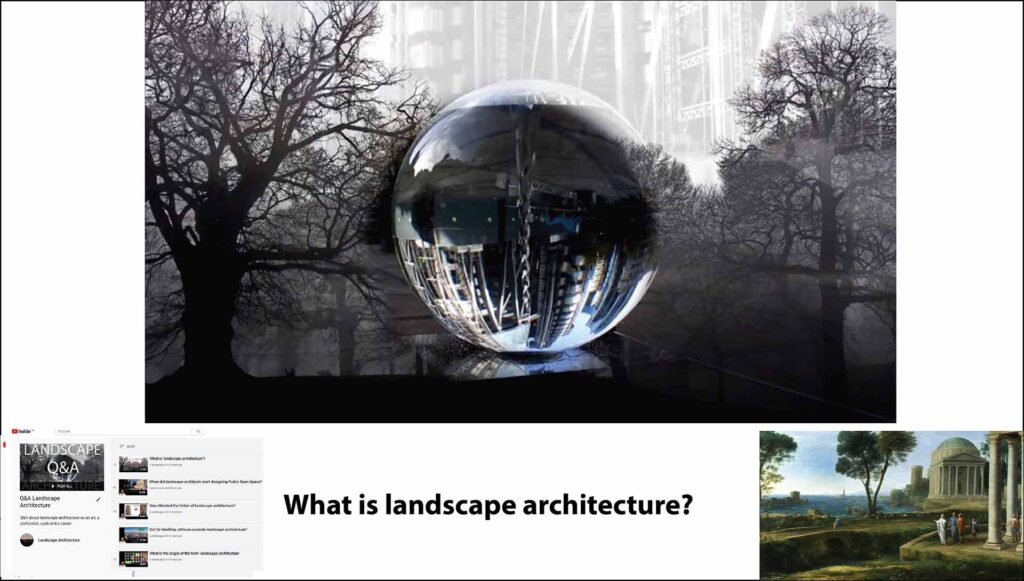What is landscape architecture? Q&A

Question: What is “landscape architecture”?
Short answer: Landscape architecture can be defined as the art of composing landform, water and plants with buildings and pavings to create places with the Vitruvian qualities of utilitas, firmitas and venustas (Commodity, Firmness and Delight). Landscape architects often interpret these design objectives as functional quality, ecological quality and visual quality.
Longer answer: Landscape architecture is one of the world’s most important professions. It deals with the relationship between man-made structures, grouped together as ‘architecture’, and the environment, which we see – as landscape. Hence the job title: landscape architect. We use drawings and models to compose landform, vegetation and water in relation to paths, roads, dwellings, offices, factories, parliaments, etcetera. Our dream is to create harmony between man and the land. In a book, on Landscape into art, Sir Kenneth Clark described this beautifully, as:- the dream of ‘a golden age when men lived on the fruits of the earth in peace and simplicity’.
Landscape architects work at three scales.
- At the garden scale, we compose landform, vegetation and water with walls, buildings and other features.
- At the town scale, we plan and design parks, squares, greenways and cycleways in relation to streets and to the urban fabric.
- At the regional scale, landscape architects identify which land should and should not be built upon – to conserve the environment – and to create new public goods.
So the question ‘What is landscape architecture?’ can be answered quite simply: it is the art of composing the five primary elements of the outdoor environment:
landform, water, vegetation, paving and other structures.
